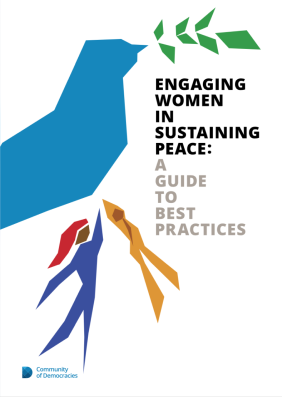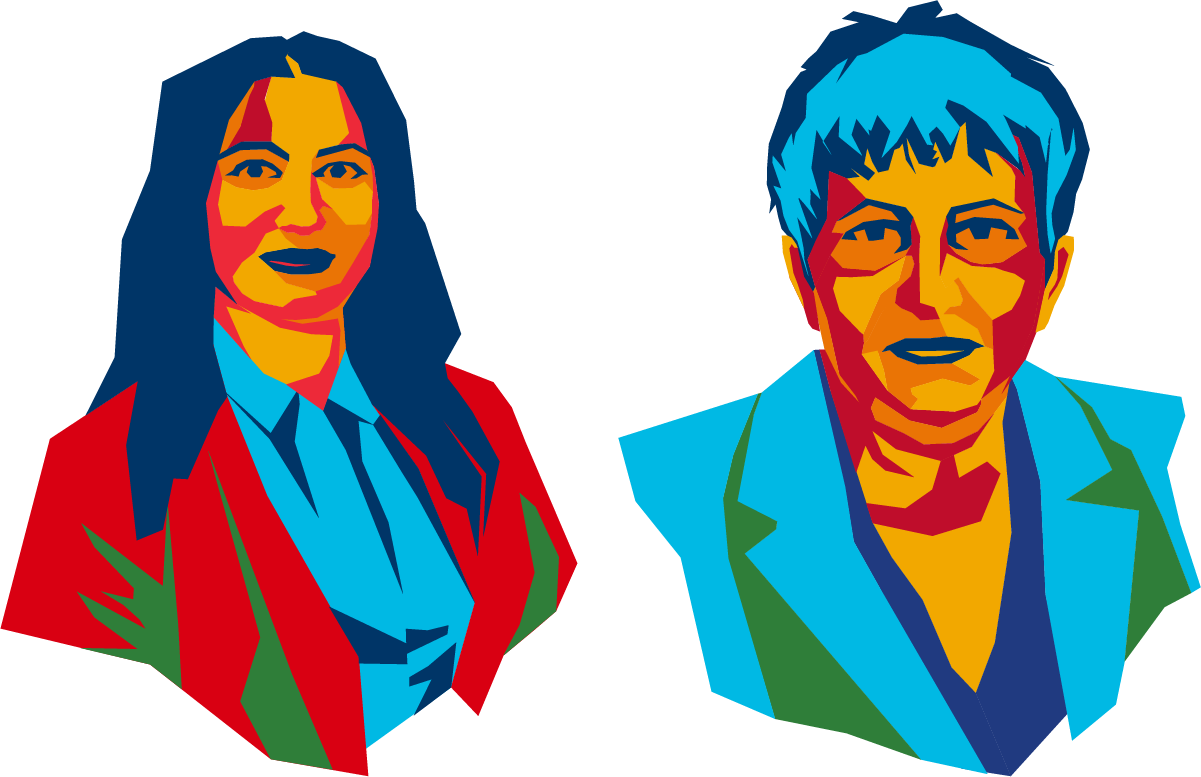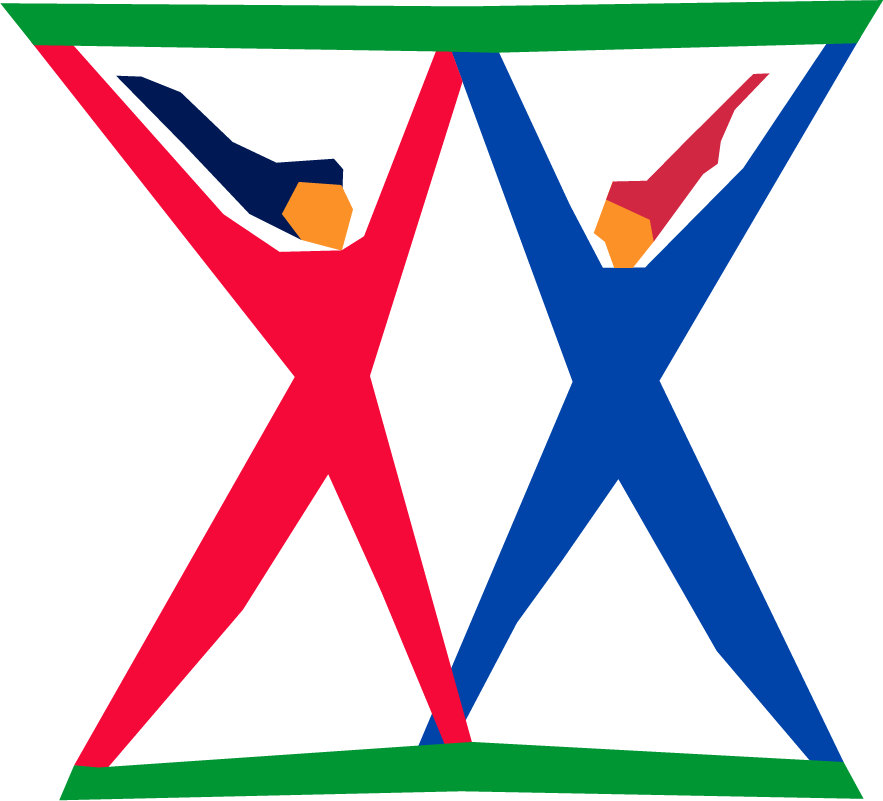The Nepalese Civil War took place from 1996 to 2006 between the Communist Party of Nepal and the government of Nepal, ending with the signing of the Comprehensive Peace Accord. More than 17 000 people, civilians and soldiers, were killed in the conflict.1http://hrp.law.harvard.edu/wp-content/uploads/2013/09/Nepal_Report_Online-2.pdf
Discovering UNSCR 1325
Bandana Rana brings a unique global perspective to her work in Nepal as a member of the United Nations (UN) Committee on the Convention of the Elimination of all forms of Discrimination against Women (CEDAW) and Chair of the Global Network of Women Peacebuilders (GNWP). In 2015, she was a member of the UN’s High Level Advisory Group on the Global Study of UN Security Council Resolution 1325 (UNSCR 1325).
For Rana, her professional journey in national broadcasting brought her in touch with women at the community level who were silenced from sharing their viewpoints: “It was very difficult to interview women. There were always men answering for her!”
Her production plans changed. Staying longer in communities to follow the singing and dancing of women early in the morning to gather their views: “Their major concern was domestic violence.”
These stories catalyzed a change in Rana’s career path: “In 1992 we established Saathi.” It was the first organization to open the first women’s shelters.
The seed of activism was planted when as a young journalist she attended UN Fourth World Conference of Women: “I saw the power of the collective movement with the 30,000 women who attended the conference and the adoption of the 12 critical areas that emerged. I realized how powerful women in the media could be from that.”
Upon her return, Rana established the Women’s Media Forum and became more engaged in civil society activism: “In 1995 we were a peaceful country. We did not understand armed conflict at all and its impact on women.” Women in armed conflict became a priority in 1996 when the crisis broke out in Nepal and she began working with conflict affected women in villages. They were the elderly, mothers with very young children caught between the two armed forces – the state and the non-state actors: “You could hardly see men or young people. The men had either migrated or joined the rebels. Young girls had also migrated internally to cities for better jobs or hidden themselves. These women were surviving.”
What she did was help the women organize and mobilize, regardless of caste, creed, age, rural and urban divisions: “It was about collective power.”
Women shed the traditional roles in their homes and even in the fields.
The next step was to get the women to the peace table to ensure they influenced the conflict resolution strategies: “That’s when I discovered 1325!”
She began localizing 1325, organized orientations with journalists and the security sector.
An important mentor at the time was the late Sahana Pradhan, who was Minister of Foreign Affairs until she resigned on 16 April 2008. Pradhan championed UNSCR 1325 and brought high-level officials to the women, peace and security table.
Amidst highlights there are also disappointments. While the 2006 Comprehensive Peace Agreement between the Government of Nepal and the Communist Party of Nepal brought an end to the armed violence, what Rana was not prepared for was the emergence of political divisions which also impacted on the women’s movement: “There was a certain time when there were divisions amongst women’s groups.”
Those she met through global engagement and collaboration at meetings such as the UN Commission on the Status of Women became mentors and allies: “You do the advocacy at the local level, you implement at the local level, you strategize at the local level, but you do need that global experience. That has helped advocacy, awareness and to build more reliable and realistic strategies.”
These global networks supported her, she says, as she struggled to get Nepal’s National Action Plan (NAP) on Women, Peace and Security adopted. “We organized inclusive and participatory consultations in fifty-two (52) of the 75 districts of Nepal for the development of the NAP. The advocacy had to be strong. You had to be persistent. Global best practices and UN mandate intensified the advocacy.”
Implementing WPS Commitments
Nepal adopted its first NAP for the implementation of UNSCR 1325 and 1820 (on sexual violence during wars) in 2011 for the period of 2011 to 2016. Led by the Ministry of Peace and Reconstruction, other government agencies, development partners, donor organizations, international non-governmental organizations, and civil society were involved in the development of the NAP. The NAP is contextualized within a broader set of government policies and initiatives that seek to mainstream gender and implement UNSCR 1325 and 1820 in Nepal.2http://peacewomen.org/nap-nepal
State accountability on the implementation of the NAP was also a priority for Rana: “Who does it report to? What happens? I needed answers!”
She subsequently went on to contribute through national and regional consultations to the formulation of the CEDAW General Recommendation (GR) No. 30 on women in conflict prevention, conflict and post-conflict situations, a landmark document giving authoritative guidance to countries that have ratified CEDAW on concrete measures to ensure women’s human rights are protected before, during and after conflict. The general recommendation makes clear that the Convention applies in all forms of conflict and post-conflict settings and addresses crucial issues facing women in these settings, including violence and challenges in access to justice and education, employment and health. It gives guidance on States parties’ obligation of due diligence in respect of crimes against women by non-State actors. The general recommendation affirms CEDAW’s linkages with the UN Security Council’s Women, Peace and Security (WPS) agenda.3https://www.unwomen.org/en/digital-library/publications/2015/8/guidebook-cedawgeneralrecommendation30-womenpeacesecurity
As the focal point for the GR 30 in the CEDAW Committee now she is on the frontline of asking member states how they are implementing WPS commitments including the allocation of resources and involving women from civil society in implementation and review of plans.
In August 2018, she convened the “Strengthening Synergies between the CEDAW and the WPS Resolutions” workshop held in Kathmandu, in partnership with Saathi, the 1325 Action Group and GNWP,4https://gnwp.org/nepali-civil-society-prepares-for-the-shadow-report-on-implementation-of-nap-and-other-policies-on-women-peace-and-security/ brought women together to assess the achievements and challenges of Nepal’s post-conflict reconstruction and peacebuilding processes including the NAP implementation; and analyzed the priorities and gaps in the government and civil society reports to the CEDAW Committee.
Some of the strengths and opportunities identified were the Constitution and the Federal government structure and decentralization; establishment of the Truth and Reconciliation Commission, Commission of Investigation on Enforced Disappeared Persons and other commissions such as on human rights, women, and Dalit minority; and formation of local bodies including Judicial Committees with the power to settle and/or mediate certain cases: “Every district had a local peace committee where 33 per cent representation of women was mandatory. Even in the high-level steering committee for the implementation of 1325 which was chaired by the Foreign Minister, 40 per cent of representatives came from women’s civil society,” says Rana explaining that these political gains also came about by political parties demonstrating a willingness to be more progressive on matters relating to gender equality.
However, concerns have included the lack of monitoring mechanisms, such as the lack of adequate human and financial resources to ensure the gains that have been made at the national level are reflected in the actions of the established seven provincial governments.
The 2017 local elections were significant in advancing female political representation in Nepal. The quota system meant that at least 40.4 per cent of total nominees should be female, including a rule mandating that the chief and deputy chief nominations put forth by each political party in each local unit should be gender-even. While significant number of women elected have been involved in civil society activism and the results reflect the progress of the women’s movement, the road to women’s substantive participation in leadership and decision-making roles is littered with many challenges: “In many cases the concept of gender equality, inclusion is not as strong as it needs to be.”
Rana is also disappointed with the dissolution of the Ministry of Peace and Reconstruction, Local Peace Committees, and Women and Children Development Office – all key structures for the implementation of Nepal’s National Action Plan (NAP) on UNSCR 1325. She says that it showed the lack of ownership of the WPS agenda among certain government ministries and agencies. It has contributed to the delay in the adoption of Nepal’s 2nd NAP which is a matter of concern, Rana highlights.
She suggests that there are opportunities, however, at the regional inter-governmental level: “Issues like migration and trafficking, are women, peace and security issues,” says Rana, which require the protection of women who are travelling across borders either legally or illegally: “We need to have inter-governmental solutions.”
Sustaining Peace in 2020
Reflecting on the current challenges that women face in their efforts to sustain peace in 2020, Rana refers to the coronavirus (COVID-19) pandemic that exacerbates many pre-existing fragile situations. The safety and protection of health workers, nurses and care-givers is essential in the COVID-19 response says Bandana Rana: “Most of the frontline health workers are women. They are most at risk and proper attention must be given to their protection. They are the nurses and caregivers, but the priority is not given to them.”
COVID-19 is a woman, peace and security priority as women-peacebuilders turn their attention to the prevention of gender-based violence in homes. Rana says that women and children cannot be expected to stay locked in with perpetrators.
In Nepal where she is involved in the management of safe shelters, Rana says that prevention and protection measures must include costs for shelters opening their doors to provide safety and security for more women as the levels of violence increase: “Here in Nepal we run shelters and in this lockdown period we have had so many survivors call us and we are taking them in despite the limited resources. We have to take care of the safety and security of present residents. We have to ensure there are proper quarantine measures in place, protective [equipment for] health care workers and this is a huge challenge in this crisis.”
She adds that women in the informal sector bear the brunt of the associated economic crisis making them more vulnerable to exploitation.
According to UN Women, even before COVID-19 existed, domestic violence was already one of the greatest human rights violations. In the previous 12 months, 243 million women and girls (aged 15-49) across the world have been subjected to sexual or physical violence by an intimate partner. As the COVID-19 pandemic continues, this number is likely to grow with multiple impacts on women’s wellbeing, their sexual and reproductive health, their mental health, and their ability to participate and lead in the recovery of our societies and economy.
Wide under-reporting of domestic and other forms of violence has previously made response and data gathering a challenge, with less than 40 per cent of women who experience violence seeking help of any sort or reporting the crime. Less than 10 per cent of those women seeking help go to the police. The current circumstances make reporting even harder, including limitations on women’s and girls’ access to phones and helplines and disrupted public services like police, justice and social services. These disruptions may be compromising the care and support that survivors need, like clinical management of rape, and mental health and psycho-social support. They also fuel impunity for the perpetrators.
Women’s access to information is key at this time, she explains. Unlike the response to the 2015 earthquake, when there was extensive outreach, the COVID-19 lockdown is resulting in collective local mobilization. The local-level women’s disaster network is activated and mobilized: “We are talking to each other remotely, generating support packages for women who do not have income. We just can’t gather together.”
Women rely for information on radio, including Nepal’s vast network of community radio stations. It is an appropriate and accessible medium to ensure women are not further isolated and to also bring greater government attention to women’s peace and security priorities says Rana: “More messages are needed to bring attention to the prevalence and prevention of violence.”
The key is engaging women, including those from the most remote and vulnerable communities, to inform the national COVID-19 response. Women activists in Nepal have come together to formulate a Women’s Charter that outlines how the national government can better address women’s needs.
Looking ahead to the future, Rana would like to see greater political will and the equal allocation of all resources to achieve gender equality goals, leaving this message to young women: “Now we need a second generation of leaders who will actually take all we have achieved, own it and take it forward.”
-
hrp.law.harvard.edu
Assistance overdue: Ongoing needs of civilian victims of Nepal’s armed conflict. -
peacewomen.org
National Action Plan: Nepal -
unwomen.org
Guidebook on CEDAW general recommendation no. 30 and the UN Security Council resolutions on women, peace and security -
gnwp.org
Nepali Civil Society Prepares for the Shadow Report on Implementation of NAP and other policies on Women, Peace and Security
The story of Bandana Rana of Nepal speaks to women’s involvement in post-conflict planning, a commitment from the UN Secretary General seven-point action plan for gender-responsive peacebuilding (2010). Based on desk research conducted on post-conflict countries across the world, the Community of Democracies’ publication on “Engaging Women in Sustaining Peace: A Guide to Best Practices” distils seven commitments outlined in this action plan and identifies good practices and lessons learned in engaging women in peacebuilding.




 go back: about
go back: about








